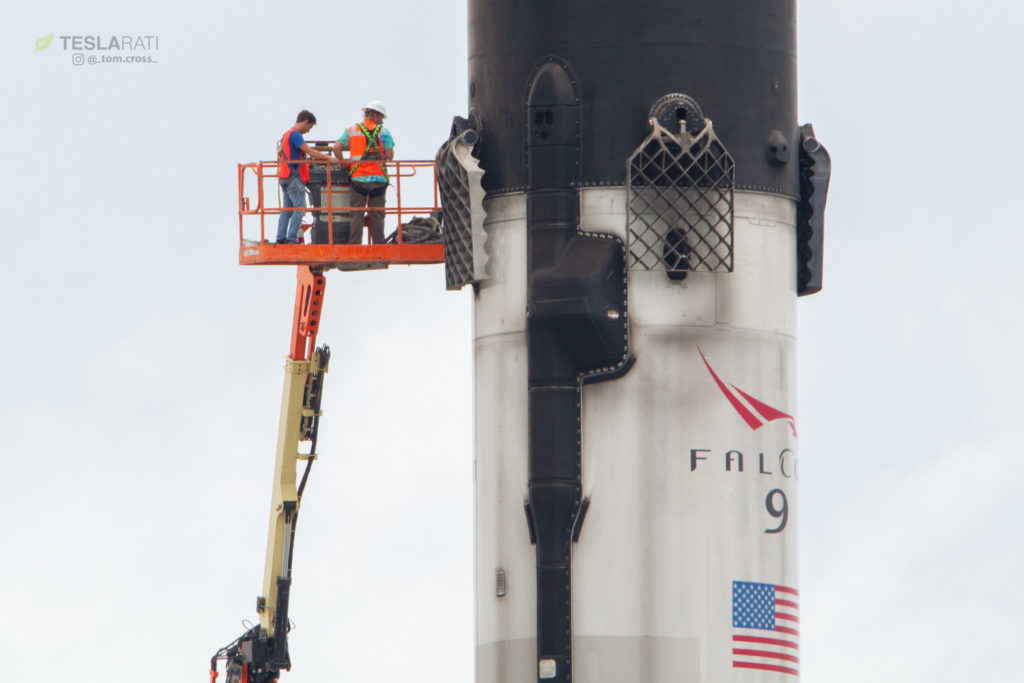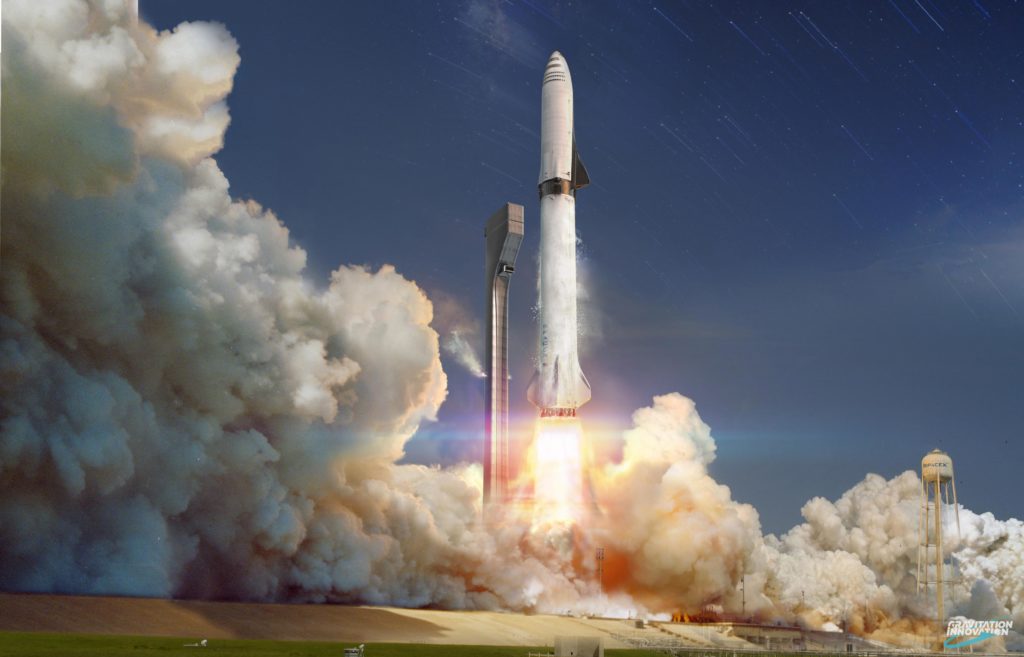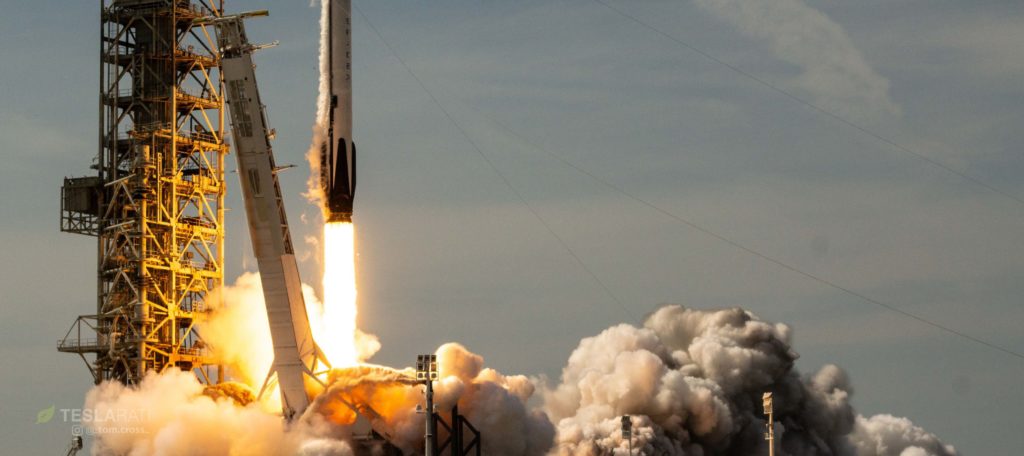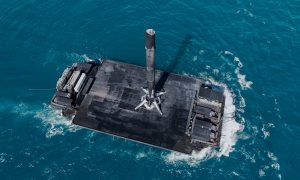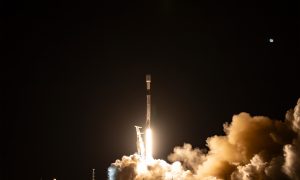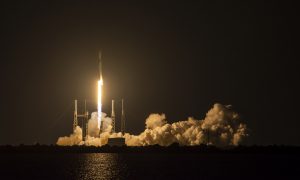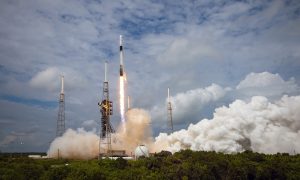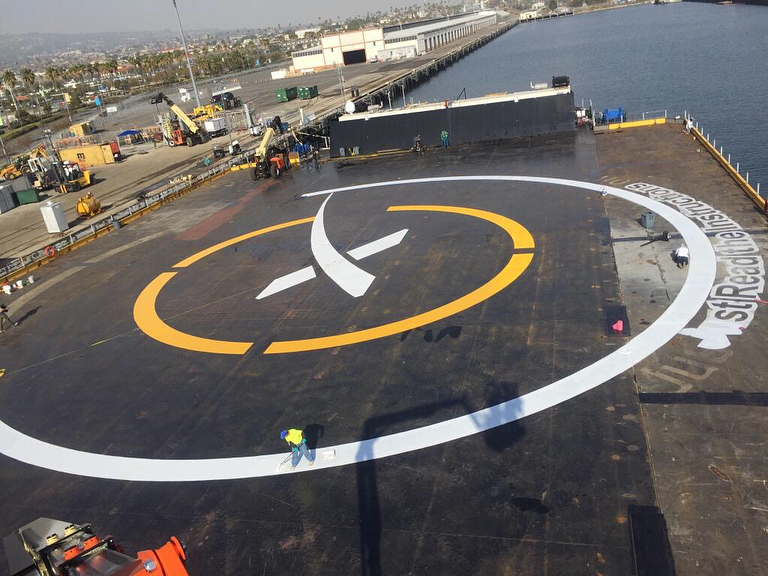

News
SpaceX readies Falcon 9 Block 5s for bi-coastal launches and landings
After several months of preparation behind the scenes, SpaceX’s second and third serial Falcon 9 Block 5 rockets are ready for the first launches of the upgraded vehicle from Vandenberg Air Force Base, CA (VAFB) and Cape Canaveral Air Force Station, FL (CCAFS).
On the calendar for 1:50 am EDT/5:50 UTC July 22 and 4:39 am PDT/11:39 UTC July 25, SpaceX launches of Telstar 19V and Iridium NEXT-7 are set to mark the beginning of a new era for the company, where all future missions will fly with Block 5 hardware upgraded for reusability and reliability and attempt recovery almost without fail.
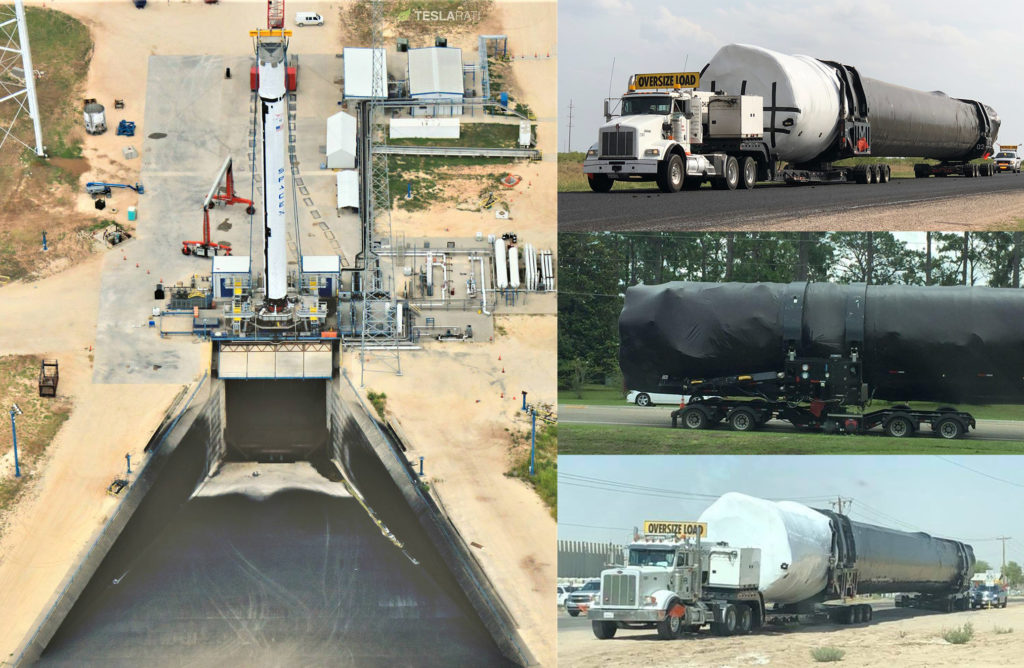
Three Falcon 9 boosters captured in various states of transport and testing over the last six weeks, two of which are B1047 and B1048. (Teslarati/Tesla Motors Club/Reddit/Facebook)
Bursting out of the expendable rocket cocoon
While it may be the case that an odd launch or two require a booster be expended to prevent schedule delays or carry an exceptionally heavy satellite to an exceptionally high orbit, it’s safe to say that such a mission with Block 5 boosters will be an anomaly. Somewhat iffy comments posted on Reddit recently claimed that Falcon Block 5 boosters would be able to easily (and rapidly) hop between roles as side and center boosters for both Falcon 9 and Falcon Heavy. While wild, those claims, in retrospect, make a lot of sense, even if the reality of Block 5 booster interchangeability was a tad exaggerated.
If SpaceX truly wants to end the practice of expending rocket boosters, – and eventually fairings and upper stages, with any luck – the company will truly need to embrace a strategy that’s long been floated by executives like CEO Elon Musk and COO/President Gwynne Shotwell. That strategy dictates that SpaceX routinely use both Falcon 9 and Falcon Heavy as an almost interchangeable and rocket team capable of launching nearly every orbital payload conceivable today, all while remaining in fully or mostly reusable modes of operation.
- B1046 returned to Port Canaveral shortly after its May 4 debut, and is now being carefully analyzed as pathfinder hardware. (Tom Cross)
- OCISLY as seen by Tom Cross on March 5, readying for a busy future of rocket recoveries. (Tom Cross)
- At the request of a friend, artist David Romax put together a truly jaw-dropping collection of concept art featuring SpaceX’s BFR rocket and its Cargo and Crew spaceships. (Gravitation Innovation/David Romax)
At the moment, educated estimates of Falcon Heavy’s true performance margins with dual booster landings at SpaceX’s Florida landing zones and center core recovery aboard Of Course I Still Love You (OCISLY) suggest that the Block 5 version of Falcon Heavy should be capable of launching every commercial satellite planned or penciled in for launch over the next five years, at a minimum. Finally, while the Falcon family’s fuel choice of high-grade kerosene (RP-1) and liquid oxygen make the rocket far more compact and energy-dense than alternatives, one downside of that choice is a loss of efficiency, although brute-force strength makes FH a competitive beast for all missions beyond Earth orbit (Mars, Venus, Saturn, asteroids, comets, etc).
However, a fully-expendable Block 5 Falcon Heavy seems to be at least 3X as unlikely as an expendable Block 5 Falcon 9. Nevertheless, CEO Elon Musk made it clear that a nominal Falcon Heavy launch where both side boosters were recovered at sea and the center booster expended could accomplish a full ~85-90% of an entirely expendable mission, and for roughly $95m. As such, a combination of reusable Falcon 9s, reusable Falcon Heavys, and ~30%-expendable Falcon Heavys could successfully complete every plausible commercial and non-commercial launch in the world and do so at the lowest cost for the better part of the next five years, at which point the company’s next-gen Big F____ Rocket (BFR) ought to be operational.
Side boosters landing on droneships & center expended is only ~10% performance penalty vs fully expended. Cost is only slightly higher than an expended F9, so around $95M.
— Elon Musk (@elonmusk) February 12, 2018
Telstar 19V and Iridium-7
With any luck, SpaceX’s next two launches will be the first huge step in the direction of that one-stop-shop for competitive transportation to orbit. Teslarati photographer Tom Cross will be setting up remote cameras for the Telstar 19V’s Florida liftoff later this evening, while our West Coast fellow and famed Mr Steven-stalker Pauline Acalin will be setting up her own set of remote cameras for VAFB’s Falcon 9 Block 5 debut on Tuesday.
Static fire test of Falcon 9 complete— targeting July 25 launch of Iridium-7 from Vandenberg Air Force Base in California.
— SpaceX (@SpaceX) July 21, 2018
On the East Coast, drone ship OCISLY has already departed Port Canaveral with a duo of support vessels and a dedicated tugboat, while the West Coast’s Just Read The Instructions (JRTI) will likely take leave of the Port of Los Angeles within 24 hours. Those dual, successful (?) rocket landings will hopefully mark the first of many dozens of missions for F9 boosters B1047 and B1048.
Follow us for live updates, peeks behind the scenes, and photos from Teslarati’s East and West Coast photographers.
Teslarati – Instagram – Twitter
Tom Cross – Twitter
Pauline Acalin – Twitter
Eric Ralph – Twitter
Elon Musk
Why Tesla’s Q3 could be one of its biggest quarters in history
Tesla could stand to benefit from the removal of the $7,500 EV tax credit at the end of Q3.

Tesla has gotten off to a slow start in 2025, as the first half of the year has not been one to remember from a delivery perspective.
However, Q3 could end up being one of the best the company has had in history, with the United States potentially being a major contributor to what might reverse a slow start to the year.
Earlier today, the United States’ House of Representatives officially passed President Trump’s “Big Beautiful Bill,” after it made its way through the Senate earlier this week. The bill will head to President Trump, as he looks to sign it before his July 4 deadline.
The Bill will effectively bring closure to the $7,500 EV tax credit, which will end on September 30, 2025. This means, over the next three months in the United States, those who are looking to buy an EV will have their last chance to take advantage of the credit. EVs will then be, for most people, $7,500 more expensive, in essence.
The tax credit is available to any single filer who makes under $150,000 per year, $225,000 a year to a head of household, and $300,000 to couples filing jointly.
Ending the tax credit was expected with the Trump administration, as his policies have leaned significantly toward reliance on fossil fuels, ending what he calls an “EV mandate.” He has used this phrase several times in disagreements with Tesla CEO Elon Musk.
Nevertheless, those who have been on the fence about buying a Tesla, or any EV, for that matter, will have some decisions to make in the next three months. While all companies will stand to benefit from this time crunch, Tesla could be the true winner because of its sheer volume.
If things are done correctly, meaning if Tesla can also offer incentives like 0% APR, special pricing on leasing or financing, or other advantages (like free Red, White, and Blue for a short period of time in celebration of Independence Day), it could see some real volume in sales this quarter.
You can now buy a Tesla in Red, White, and Blue for free until July 14 https://t.co/iAwhaRFOH0
— TESLARATI (@Teslarati) July 3, 2025
Tesla is just a shade under 721,000 deliveries for the year, so it’s on pace for roughly 1.4 million for 2025. This would be a decrease from the 1.8 million cars it delivered in each of the last two years. Traditionally, the second half of the year has produced Tesla’s strongest quarters. Its top three quarters in terms of deliveries are Q4 2024 with 495,570 vehicles, Q4 2023 with 484,507 vehicles, and Q3 2024 with 462,890 vehicles.
Elon Musk
Tesla Full Self-Driving testing continues European expansion: here’s where
Tesla has launched Full Self-Driving testing in a fifth European country ahead of its launch.

Tesla Full Self-Driving is being tested in several countries across Europe as the company prepares to launch its driver assistance suite on the continent.
The company is still working through the regulatory hurdles with the European Union. They are plentiful and difficult to navigate, but Tesla is still making progress as its testing of FSD continues to expand.
Today, it officially began testing in a new country, as more regions open their doors to Tesla. Many owners and potential customers in Europe are awaiting its launch.
On Thursday, Tesla officially confirmed that Full Self-Driving testing is underway in Spain, as the company shared an extensive video of a trip through the streets of Madrid:
Como pez en el agua …
FSD Supervised testing in Madrid, Spain
Pending regulatory approval pic.twitter.com/txTgoWseuA
— Tesla Europe & Middle East (@teslaeurope) July 3, 2025
The launch of Full Self-Driving testing in Spain marks the fifth country in which Tesla has started assessing the suite’s performance in the European market.
Across the past several months, Tesla has been expanding the scope of countries where Full Self-Driving is being tested. It has already made it to Italy, France, the Netherlands, and Germany previously.
Tesla has already filed applications to have Full Self-Driving (Supervised) launched across the European Union, but CEO Elon Musk has indicated that this particular step has been the delay in the official launch of the suite thus far.
In mid-June, Musk revealed the frustrations Tesla has felt during its efforts to launch its Full Self-Driving (Supervised) suite in Europe, stating that the holdup can be attributed to authorities in various countries, as well as the EU as a whole:
Tesla Full Self-Driving’s European launch frustrations revealed by Elon Musk
“Waiting for Dutch authorities and then the EU to approve. Very frustrating and hurts the safety of people in Europe, as driving with advanced Autopilot on results in four times fewer injuries! Please ask your governing authorities to accelerate making Tesla safer in Europe.”
Waiting for Dutch authorities and then the EU to approve.
Very frustrating and hurts the safety of people in Europe, as driving with advanced Autopilot on results in four times fewer injuries!
Please ask your governing authorities to accelerate making Tesla safer in Europe. https://t.co/QIYCXhhaQp
— Elon Musk (@elonmusk) June 11, 2025
Tesla said last year that it planned to launch Full Self-Driving in Europe in 2025.
Elon Musk
xAI’s Memphis data center receives air permit despite community criticism
xAI welcomed the development in a post on its official xAI Memphis account on X.

Elon Musk’s artificial intelligence startup xAI has secured an air permit from Memphis health officials for its data center project, despite critics’ opposition and pending legal action. The Shelby County Health Department approved the permit this week, allowing xAI to operate 15 mobile gas turbines at its facility.
Air permit granted
The air permit comes after months of protests from Memphis residents and environmental justice advocates, who alleged that xAI violated the Clean Air Act by operating gas turbines without prior approval, as per a report from WIRED.
The Southern Environmental Law Center (SELC) and the NAACP has claimed that xAI installed dozens of gas turbines at its new data campus without acquiring the mandatory Prevention of Significant Deterioration (PSD) permit required for large-scale emission sources.
Local officials previously stated the turbines were considered “temporary” and thus not subject to stricter permitting. xAI applied for an air permit in January 2025, and in June, Memphis Mayor Paul Young acknowledged that the company was operating 21 turbines. SELC, however, has claimed that aerial footage shows the number may be as high as 35.
Critics are not giving up
Civil rights groups have stated that they intend to move forward with legal action. “xAI’s decision to install and operate dozens of polluting gas turbines without any permits or public oversight is a clear violation of the Clean Air Act,” said Patrick Anderson, senior attorney at SELC.
“Over the last year, these turbines have pumped out pollution that threatens the health of Memphis families. This notice paves the way for a lawsuit that can hold xAI accountable for its unlawful refusal to get permits for its gas turbines,” he added.
Sharon Wilson, a certified optical gas imaging thermographer, also described the emissions cloud in Memphis as notable. “I expected to see the typical power plant type of pollution that I see. What I saw was way worse than what I expected,” she said.
-

 Elon Musk3 days ago
Elon Musk3 days agoTesla investors will be shocked by Jim Cramer’s latest assessment
-

 News1 week ago
News1 week agoTesla Robotaxi’s biggest challenge seems to be this one thing
-

 News2 weeks ago
News2 weeks agoTexas lawmakers urge Tesla to delay Austin robotaxi launch to September
-

 Elon Musk2 weeks ago
Elon Musk2 weeks agoFirst Look at Tesla’s Robotaxi App: features, design, and more
-

 Elon Musk2 weeks ago
Elon Musk2 weeks agoxAI’s Grok 3 partners with Oracle Cloud for corporate AI innovation
-

 News2 weeks ago
News2 weeks agoSpaceX and Elon Musk share insights on Starship Ship 36’s RUD
-

 News2 weeks ago
News2 weeks agoWatch Tesla’s first driverless public Robotaxi rides in Texas
-

 News2 weeks ago
News2 weeks agoTesla has started rolling out initial round of Robotaxi invites

